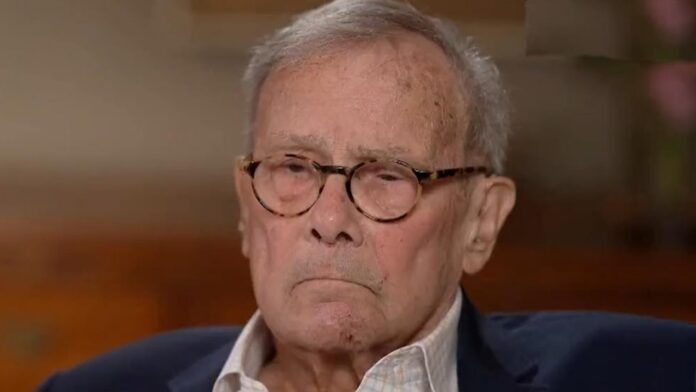The legendary anchorman shares his journey with blood cancer and the breakthrough treatments giving hope
Tom Brokaw, the esteemed 84-year-old journalist, has been navigating the complexities of multiple myeloma, a rare blood cancer that challenges the body’s infection-fighting abilities. Throughout his journey, Brokaw has faced the uncertainties of cancer diagnosis and treatment head-on, supported by his family and groundbreaking medical advancements.
Multiple myeloma affects plasma cells in the bone marrow, leading to symptoms like weakness, bone pain, and confusion. However, treatment strides have significantly improved patient outcomes. Brokaw credits his extended quality of life post-diagnosis to Revlimid (lenalidomide), a chemotherapy drug that has become a cornerstone in multiple myeloma therapy.
Despite the daunting nature of cancer treatment, Brokaw’s resolve remains unshaken. He emphasizes the crucial role his family played, particularly his wife, who has been his steadfast support system. Their combined strength, along with advanced medical treatments like Revlimid, have been instrumental in managing his condition.
The challenges Brokaw faced, including severe infections and mobility issues due to spinal compression fractures, highlight the unpredictable path of living with cancer. Yet, his mental fortitude and the support of loved ones have helped him confront these obstacles.
The medical community continues to make strides in multiple myeloma treatment, offering new hope to patients. Innovations such as combination therapies and maintenance treatments like Revlimid are extending survival times and improving quality of life. These advancements, coupled with supportive care, underline the importance of ongoing research and treatment development in the battle against multiple myeloma.
Brokaw’s experience sheds light on the critical aspects of cancer treatment: the need for effective medical interventions, the impact of emotional and familial support, and the importance of resilience in the face of adversity. As he continues his treatment, his journey serves as an inspiration and a source of information for others navigating similar paths.
